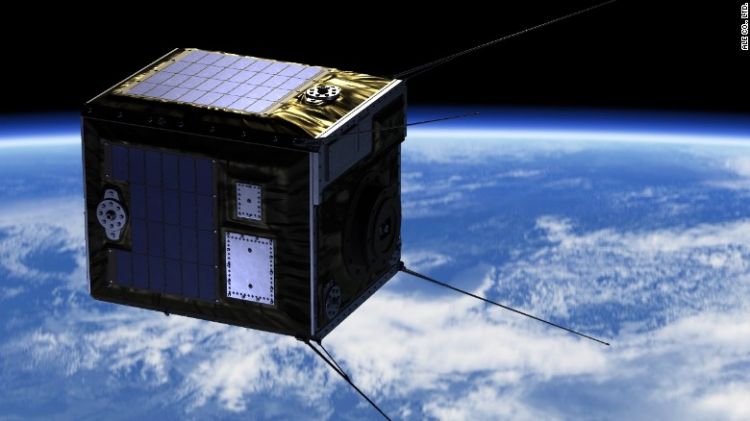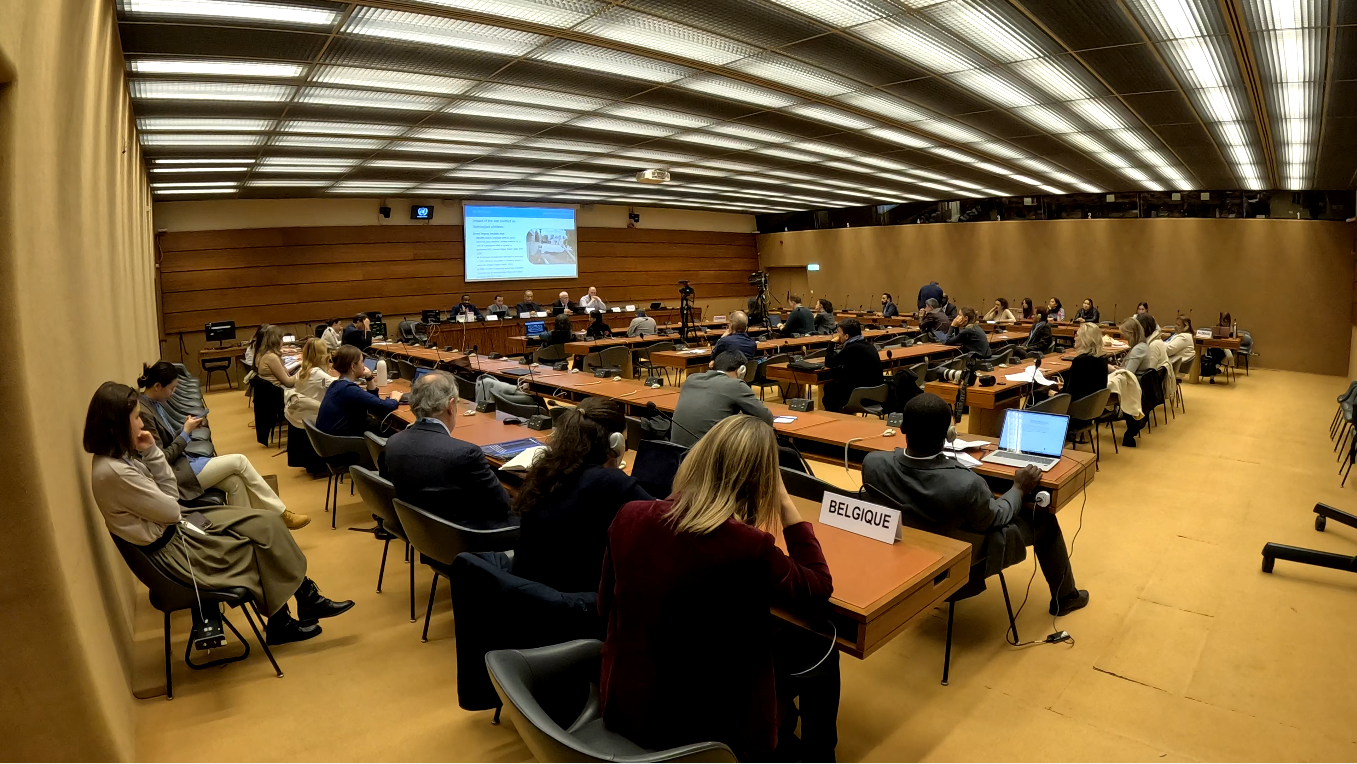"We want people to look up, not down at the ground," says Abe. "People in Japan are so busy everyday and they need more culture and science in their lives to bring them closer to nature, and to relax."
"Imagine a future, where you can use our meteors for international fireworks displays" - Shinsuke Abe, ALE's research director
It was Lena Okajima's childhood in Tottori, roughly 100 miles (160 kilometers) northwest of Osaka, that sparked the ALE founder's fascination with space.
The least populous prefecture in Japan, Tottori enjoys clear night skies and frequentdisplays of shooting stars, most notably the spectacular annual Leonid meteor shower.
"A lot of people have thought about (creating fake meteor showers) but Okajima was the first one to invest years of research into this," says Rie Yamamoto, ALE's global strategy director.
"Okajima watched meteor showers when she was younger, but living in Tokyo (as an adult) she couldn't really see them, so that played a part in her inspiration."
A former investment banker with a PhD in astronomy, in 2011 Okajima founded ALE, garnering private funding and collaborating with academics from three academic institutions.
Her ambition? To bring shooting stars to Tokyo.
Up in the thermosphere
Creating a man-made meteor show is a significant scientific feat.
First, the team will need to launch a satellite into orbit, which will take several months to reach its position at an altitude of approximately 310 miles (500 kilometers) in the thermosphere, the second highest layer of the atmosphere.
With the ability to orbit the earth for up to four years, each satellite will store about 300 to 500 of ALE's man-made meteoroids.
The satellite will frequently pass over major cities at night time, poised to provide a meteor shower.
Once the satellite is in orbit, ALE won't be able to control its speed or location, but as the company adds more satellites its coverage will become more flexible.
A discharge device, developed by ALE, will be fitted to the satellite to eject the artificial pellets, which are about 2 centimeters in diameter.
"It's like shooting a bullet from the satellite," Abe says.
Shooting stars
The initial shows will each feature around a dozen artificial meteors, breezing across the night sky.
But these "stars" will be nothing like the real thing. According to ALE, they'll be better.
"If you look up and see our shooting star, it won't be mistaken for a natural one," Yamamoto tells CNN.
ALE's meteors will travel much slower across the sky than natural meteors -- 5 miles per second (8 kilometers per second) compared with the blistering top speed of 45 m/s (72 km/s) of the real thing -- giving spectators time to take in the show.
After a meteoroid is fired from the satellite, it will travel about one third of the way around the Earth before, ALE says, entering the atmosphere at a planned location.
The heat and friction of passing through the atmosphere cause the meteors to glow so brightly they can be seen from the ground.
Real "shooting stars" -- in reality, small rocks and dust particles usually only a few millimeters in diameter that blaze through Earth's atmosphere -- dissolve entirely before reaching the ground.
ALE says its fake meteors will follow a similar process.
Personalized sky
Unlike natural shooting stars, ALE's artificial meteors will glow in different colors, creating the possibility to paint the sky.
Researchers, using a method they say they can't reveal to protect their intellectual property, have created orange, blue and green meteors so far, and plan for a wider range of colors.
The meteors will be visible from the ground across a 124 mile (200 km) diameter.
All of Tokyo would be able to enjoy such a meteor show, on a clear evening.
ALE says it sees its potential customers as likely including operators of sports games, theme parks, outdoor festivals, and other large scale events.
"Shooting stars and meteor showers are something that everyone enjoys," says Yamamoto.
"Looking up at the sky, and seeing these meteors flying past will be something we've never seen before."
Testing, testing
While the idea of an artificial meteor shower isn't new, ALE has come the closest to making it a reality.
"A lot of astronomers have shared this idea of creating artificial meteors -- I even presented an idea to the the professional community (before joining ALE) -- but there are major budget problems and there (were) several big (scientific) barriers to success," says Abe.
One of the biggest barriers was the limited scientific knowledge of meteors, due to their speed and unpredictability.
The vast majority of meteors burn out before reaching the ground, making study of their composition difficult.
To compensate for this void in data, ALE's research team have experimented with hundreds of compositions for artificial meteors, dubbed "source particles."
But creating the source particle, which shoots out of the satellite, was just the first hurdle.
In order to create an artificial meteor shower, the team needed to determine several factors -- the meteoroid's optimum orbit, trajectory, and entry angle into the atmosphere.
They are currently testing these elements in an arc-heated wind tunnel at the Japan Aerospace Exploration Agency.
An electric arc -- also called a voltaic arc -- appears in some types of light bulbs, and sees the electric current leap between two electrodes, appearing like an arc.
But at atmospheric pressure, electric arcs heat matter at extremely high temperatures -- to the tune of thousands of kelvins.
With this highly concentrated energy, the wind tunnel essentially replicates the pressure that a particle experiences when it enters the atmosphere.
The team will also conduct a series of zero-gravity tests in the laboratory before launch.
70 times brighter than reality
But perhaps the most challenging concept was the most aesthetic: the luminosity.
In 2014, ALE had a breakthrough. During testing, the team achieved a luminosity they say is 70 times brighter than a natural shooting star, although they will not reveal their methods.
There's no doubt that artificial shooting stars by ALE can clearly be seen anywhere, even in the city," says Abe.
If true, the feat is particularly impressive. Normally velocity determines luminosity, but ALE's meteors move nearly 10 times slower than the top speed of natural shooting stars.
"Luminosity is affected by velocity, so if the meteor is slower, it will be fainter," says Abe. "Our artificial meteor will be ejected from lower earth's orbit from satellites, so the entry velocity is slower."
What it means for science
ALE's work will also advance the study of natural meteors, the re-entry of satellites and spacecrafts, and the behavior of the atmosphere.
The team of about 20 astronomers and space engineers has published several scientific papers and given academic presentations based on their research. Once launched, the shooting stars could be used as a vehicle from which to observe the upper atmosphere.
The team is also delving into theories about the origin of life, as some hypotheses hold that human life originated from space -- possibly starting with amino acids carried to earth by meteors.
"(The astronomy community) is interested in composition, density, and composition of natural meteors," says Abe.
"They are coming from comets and asteroids so it's hard to get there by spacecraft.
"This kind of exploration is very rare."










